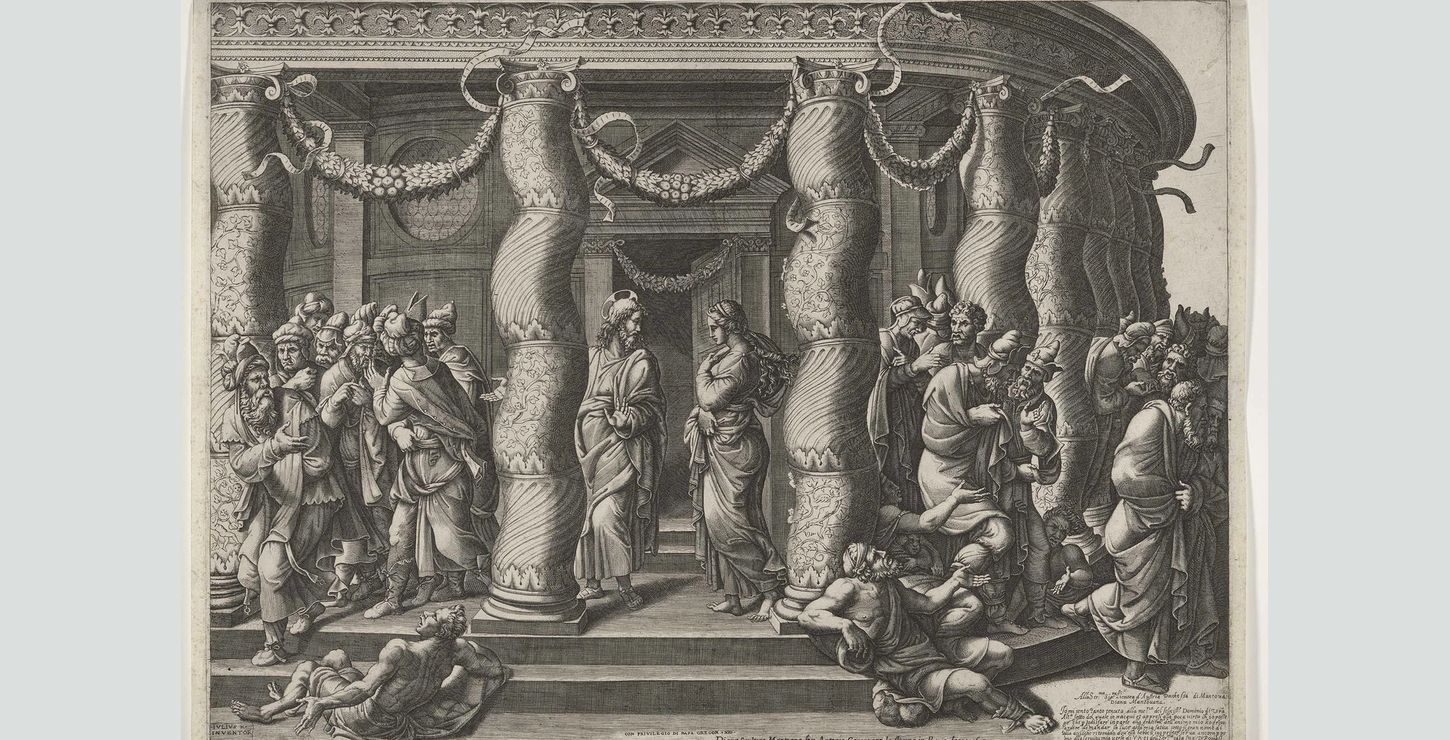Korman Galleries, 221-223
Main Building

Christ and the Woman Taken in Adultery (detail), 1575, by Diana Scultori (Italian, c. 1547–1612), after Giulio Romano (Italian, 1492/99–1546), 1928-42-1533
Diana Scultori (1547–1612), also known as Diana Mantuana, was the first documented woman in Europe to have a professional career as a printmaker. Born in the Italian city of Mantua, Diana came from a family of artists with professional connections to the local court. Like many printmakers in this period, she specialized in engraving renditions of paintings, drawings, and sculptures by other artists, which required the creativity and technical acumen needed to translate an image from one medium to another.
Diana was eventually drawn to Rome, where ambitious printmakers went to make their fortunes. Rome attracted travelers from across Europe eager to see ancient artifacts, holy sites, and work by the leading artists of the time. As an enterprising printmaker, Diana carefully selected religious, antiquarian, and mythological subjects that resonated with these audiences. Placing her work in dialogue with other printmakers in her orbit, this exhibition highlights Diana’s contributions to the dynamic world of printmaking in late-1500s Rome.
Korman Galleries, 221-223
Main Building
Heather Hughes, Kathy and Ted Fernberger Associate Curator of Prints
Check out the variety of events offered by this program, for members and the public alike.